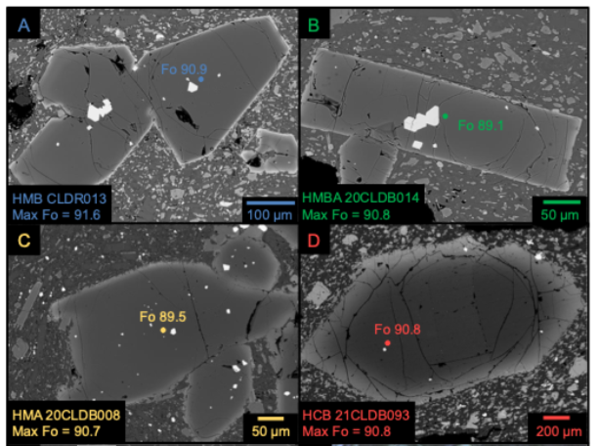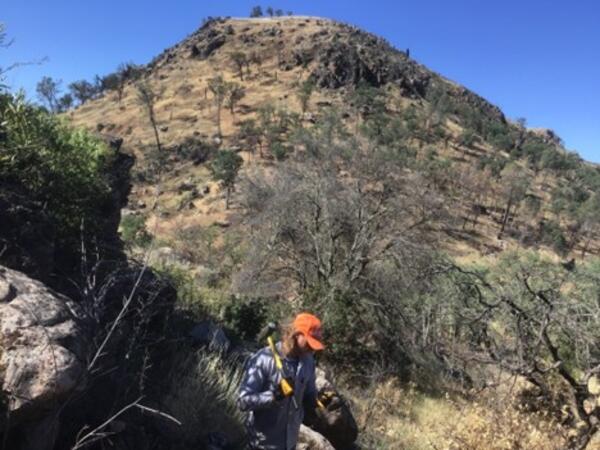Back-scattered electron images of olivine and chromium spinel crystals
Back-scattered electron images of olivine and chromium spinel crystalsBack-scattered electron images of olivine and chromium spinel crystals from primitive Clear Lake Volcanic Field samples. The labeled colored dots on the crystals show the locations where they were analyzed with an electron microprobe for geochemical information. Figure by Dawnika Blatter.



